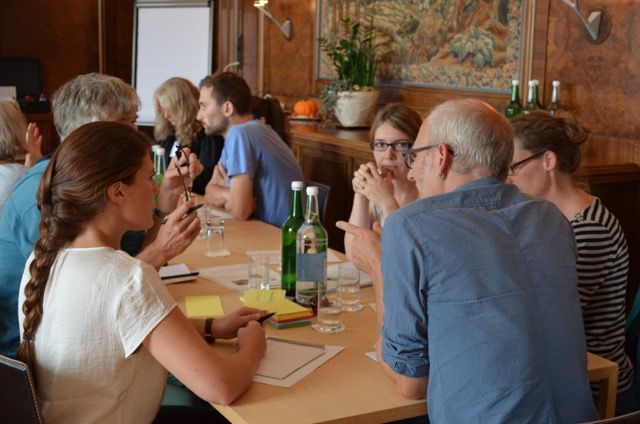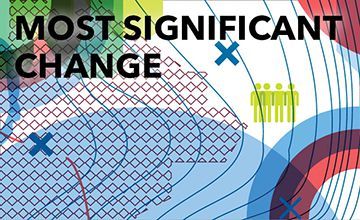Most significant change
A story-based, qualitative method for uncovering most significant project impacts experienced by individuals.
Wülser G 2020. Most significant change technique. td-net toolbox profile (4). Swiss Academies of Arts and Sciences: td-net toolbox for co-producing knowledge. www.transdisciplinarity.ch/toolbox. doi.org/10.5281/zenodo.3717069
| What is the most significant change method? | The most significant change (MSC) technique serves the participatory monitoring or evaluation of complex interventions and other social change programmes or projects. It can be used throughout or at the end of a project or programme cycle. The MSC technique uses stories from the field level to collect important outcomes valued by individuals or actor groups and in order to reflect upon their significance. It includes systematic and transparent discussion and consolidation processes among designated groups of stakeholders in order to identify most significant changes. It allows a reflection on different perceptions and priorities and to check the direction the work is taking. |

Why should it be applied? | The MSC technique promotes a qualitative, open and participant driven way of identifying outcomes that are relevant to various - maybe highly heterogeneous – actor groups. Participants determine what to record and they are involved in analysing the data. It is well suited for communicating across cultures. The most significant changes that are identified may reveal unexpected changes. They can be compared to initial expectations or predefined goals, and, in a subsequent step, serve as a basis for quantitative assessments. |
| When should it be applied? | The method is particularly well suited for monitoring or evaluating complex interventions, programmes or projects that intend to produce change. Such programmes may feature a multilayer organisation structure, and produce highly diverse outcomes. The method should be applied: i) when it is unclear what valued outcomes are; ii) for bottom-up initiatives that do not have predefined outcomes against which to evaluate, and iii) when it is important to align or reconcile the value base or priorities of the programme with that of its addressees. |
| How does it work? | 1) 3-5 relevant domains of change can be loosely determined for the process under investigation (e.g. changes in the quality of life of those affected by the intervention programme). The reporting period is defined. 2) The various actors (researchers, practitioners: those most directly involved) individually provide short stories describing the most significant change that took place for participants out of their personal perspective, and giving reasons why this is most significant to them (1-2 pages in length, depending on the complexity of the programme and topic). The actors allocate their story to the domains of change determined in step 1. 3) Once changes have been captured, people sit down together, read the stories aloud and discuss the value of the reported changes (analysis) in order to select one most significant change per domain. 4) Depending on the group size and complexity of organisational or hierarchical levels, this can involve several rounds of filtering. Story selection criteria should be recorded and feedback between rounds provided. 5) The results are discussed with respect to expectations, the lessons learnt are collected and the stories are documented. |
| How are thought styles bridged? | Discussing reasons why certain changes are judged to be important by participants with different backgrounds bridges thought styles. This allows the comparison of underlying values and priorities, and creates understanding for groups representing other thought styles. |
| What’s the output/outcome? | The outcome is a collection of most significant changes of a process that a group of people went through together, showing similarities and differences of the group with respect to how the process was perceived. |
| Who participates in what role? | Everyone involved in the programme, or – in case of very large programmes – selected actor group representatives. A facilitator leads the process and moderates the discussions. |
| What do I need to prepare? | Participants need something to note their stories. It is helpful to provide flipcharts for the joint discussions on the significance of the stories. |
| When not to use the method? | If a programme is not complex and its desired outcomes are clear and obvious so that they can be evaluated using a conventional indicator approach (which is less time consuming). If bringing about (social) change is not the intention of the programme. |


